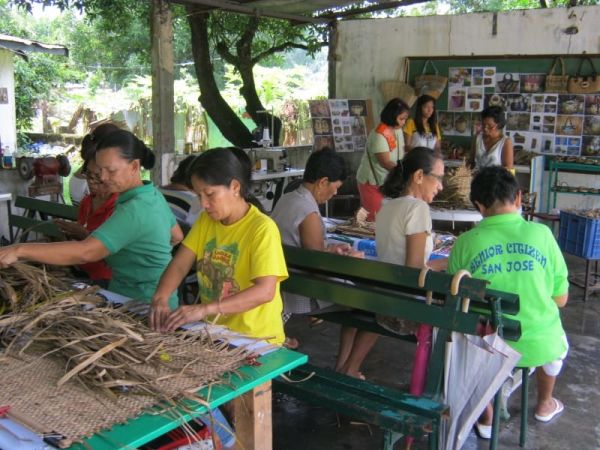Philippines
Loan description:
Water hyacinths, commonly known as water lilies in the Philippines, are free-floating aquatic plants native to tropical countries. In the Philippines, these plants are usually present on the surfaces of rivers and lakes and can rise to as much as one metre in height. Water hyacinths can grow extremely quickly and are able to double their population in a matter of weeks. However, they can be damaging to their natural habitat, preventing the regular flow of water currents. The water hyacinths also block waste such as empty cans, plastic bags, and wrappers that unfortunately find their way into rivers and lakes. This actually increases the possibility of flooding during the rainy season. Flooding in turn increases the likelihood of various illnesses and diseases including dengue fever because of the increased number of virus-carrying mosquitoes and leptospirosis - a bacterial infection.
The neighbourhood of San Jose in the town of San Miguel in the province of Bulacan in Central Luzon region is an area affected by large quantity of water hyacinths. Maria Cristina Reyes is 62 years old and married. She has come up with a very unique and effective response to reducing the impact of water hyacinths. Cristina started a business producing a variety of woven products made from the stalks and leaves of water hyacinths. The plants are collected on a weekly basis from the nearby river in in San Jose and then dried. The stalks are left in the river and the leaves re-grow after a few weeks, meaning that there is a constant source of raw materials. The harvested material is washed with water and cleaning solutions and hung in bundles for a period of 3 weeks to dry. From a natural colour of green, the raw materials will become brown when fully dried and the stalks are then converted into strips.
She received assistance from her husband Romeo Reyes, 60, who has been the local neighbourhood chairman of San Jose for the past four years. They have three children, all of whom are married. All three finished college graduating with degrees of engineering, computer science and interior designing respectively.
Cristina purchased customised equipment that flattens the materials before weaving can begin. The dried leaves serve as decorations. A smaller number of stalks and leaves are soaked and dyed in different colours so that the final products appear more attractive. She produces traditional bags, flip-flops, baskets, lamp shades, wallets, home decorations and even furniture from the water hyacinths. Three bulks of stalks can produce one pair of beautiful and durable sandals.
Cristina employs 25 staff from her neighbourhood, all of them are single parents. Each has been trained and while some specialise in weaving dried stalks, others focus on applying decorations. Most of the staff are allowed to work from home so that they can combine working with looking after their children.
Cristina received help in establishing the business through a small grant from the Department of Agriculture. Now, she has weekly and monthly orders from local and provincial buyers, particularly for bags and flip flops. Not only has her business provided employment and income for others in her local community but it has also had a positive impact on the local environment.
Cristina is the first 'Small and Medium Enterprise' client of SEEDFINANCE Corporation. She also has a tarpaulin printing business which she runs together with her husband, printing advertisements, posters and banners. They have also established a local cable television network in San Miguel, Bulacan which provides the whole town and nearby areas with affordable monthly cable services. Christina received and repaid a previous loan of one million pesos. She has now sought another loan amounting to 100,000 pesos to finance the operations of the water hyacinth business, in an operation she calls Project Lily. She will use the loan to acquire more equipment, including machines to dry the stalks and leaves of water hyacinths, more units to press the stalks into thin strips before they are woven, and sewing machines for the decoration of products. She intends to repay the loan over 12 months. Cristina is planning to establish a co-ownership agreement with her 25 workers so that they can become successful entrepreneurs like her in the near future.
Loan added: 13 September 2011
Cristina's loan repayment schedule
| Date | Expected repayments | Actual repayments |
|---|---|---|
| £157.55 | ||
| £131.29 | ||
| £131.29 | ||
| £131.29 | ||
| £131.29 | ||
| £131.29 | ||
| £131.29 |
The above amounts are indicative, based on the exchange rate the day this loan was added to the website. The actual amounts you will receive will be based on an exchange rate at the time the repayment is returned to your account. See our Help Centre for more information.



















